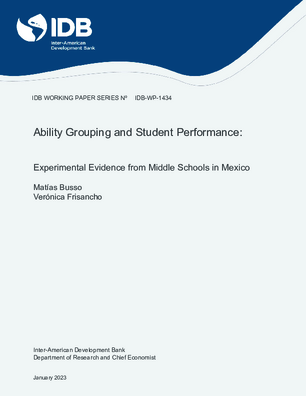Ability Grouping and Student Performance: Experimental Evidence from Middle Schools in Mexico
Date
Jan 2023
Summary
This article relies on a large-scale field experiment in Mexico to measure the effects of two ability-grouping models (tracking and heterogeneous/bimodal groups) on student learning outcomes during middle school. Both strategies yielded an average learning gain of 0.08 of a standard deviation. We find larger and more persistent effects among initially high-achieving students and no significant effects among low achievers. Students in top tracking enjoyed multiple advantages, particularly a concentration of high-performing peers and a very homogeneous classroom, that facilitated the teacher's work and increased students' effort levels. Bimodal classes fostered greater effort levels among top students, while teachers induced less competition and allocated more time to practice and feedback activities, to the detriment of lecture time. Our results support the allocation of students to homogeneous classes to maximize performance gains among top students without hurting low achievers. Fostering inclusive learning among weaker students would require complementary investments under both models.




